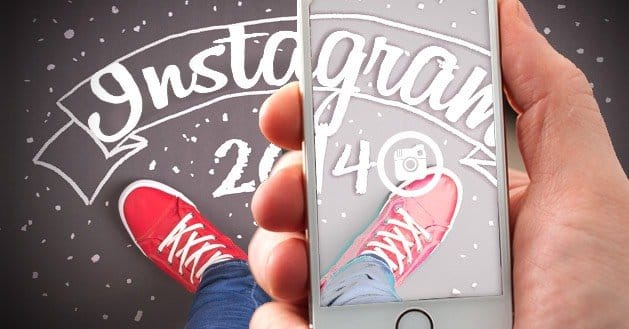 Written by ContentPowered.com
Written by ContentPowered.com
Instagram marketing has not significantly changed in the last year, with one exception; it has become a lot more competitive and a lot better known. Why? Studies have shown that the average Instagram user is over 50x more likely to engage with a post on Instagram than on any other site. Part of this, for sure, was due to how little marketing there was on the site.
Instagram currently has somewhere in the neighborhood of 200 million active users monthly, which means it has a fairly large audience, despite still being one of the smaller social networks. Part of this, certainly, is due to the barriers to entry and how image-focused the site is.
There are some ongoing trends in marketing, however, that promise to explode in the next year.
Massive Growth in Marketing
Since the revelation that Instagram is by far the most engaged audience online, at least among major social networks, businesses are swarming to get profiles set up and make use of them. This is going to continue to snowball throughout the end of 2014, unless a drastic shift in visibility or curation occurs. The ball is in Instagram’s court.
As it stands, Instagram is not a marketer-focused platform, like Facebook and Google+ have become. It always has, and remains, focused on the user. Marketers need to get used to the situation and learn how to use the platform, because it doesn’t cater to them. While there are paid promotions available, they aren’t significantly better than organic engagement just yet.
Brands, in their rush to a fertile new land, are gobbling up hashtags for their ad campaigns. The traditional style #company tags have proven to be low-quality, so brands are coming up with interesting tags that tie in to their brand persona and company vision. Hootsuite has a few good examples.
The key to creating these valuable hashtags is to find a phrase that’s far enough away from generic to have remained unused to this point, but something generic enough that users don’t feel as though they’re advertising a company when they use it. A good tag includes a theme that helps tie the images within together; the brand is advertised simply by being social and encouraging users to participate.
Increased Value in Existing Influencers
Instagram has existed for a while, relatively free of marketing, which has allowed numerous user-owned, non-branded accounts to rise to a high degree of prominence. These accounts are generally known to curate high quality content and share excellent content of their own. Gaining the attention or the recognition of these influencers can bring in an immediate influx of valuable traffic.
In the coming months, influencers are going to be courted by brands to gain their approval. Some influencers won’t sell out. Others will hold out for the big brand prices. Still others will be happy to trade a review for a product, or some other gift within the budget of a small business.
Brands will have to be aware that not all influencers are a good fit for all brands. A blogger known for their pictures of organic living isn’t going to want to endorse a soft drink company; it’s just not a good fit.
Riding the Wave
The beauty of Instagram is it’s a social network that’s still on the rise. Brands getting into it now have the benefits of being early adopters, establishing their place before other brands try to shove in and make room for themselves. Admittedly, some brands have already carved out sizable niches for themselves on the platform, but the beauty of visual art is that it has endless variety. Every brand has a unique character, and taking advantage of that character is vital.
For the moment, Instagram is biggest amongst younger users. The so-called Millennial generation is the core. This limits the range of businesses that can effectively use the site for promotion. Brands that focus on B2B sales, or that emphasize products or services that are most valuable to an older audience, aren’t going to find much to love on Instagram. Millennials are a fickle audience, and they are quick to pass over anything not sufficiently compelling. Perhaps, as the platform grows, so too will the demographics; only time will tell.
Reactive Storytelling
A concept explored in the Ultimate Guide to Instagram Marketing by Ross Simmons, reactive storytelling is a sort of combination of human insight, newsjacking and culture. Certain brands, thoroughly entrenched in popular culture, can pull this off swimmingly. Oreo is frequently cited as a brilliant example, and their Instagram page – like their Twitter and Facebook pages – shows it off well. The brand is amazing when it comes to composing high quality, artistic images with their product in a way that implies a story without a single word. This is the kind of quality brands should strive for on Instagram.
Instagram is the absolute king of humanizing a brand. Facebook, Twitter and all the rest play at humanizing a company by expressing the textual availability of a human behind the screen, but Instagram can express it visually. Behind the scenes content is exceptionally valuable. It’s proof, even staged proof, that your company isn’t run by a lot of mindless suffering drones
Tips for Instagram Success
Brands looking to get into the Instagram scene are well advised to spend a few weeks using the site as personal users, to get a feel for how users interact with each other and what the culture is in terms of comment etiquette.
When it comes time to set up a profile, do so carefully. Picking your username will color your whole interaction on the site. Once registered, you have three things to focus on before you proceed:
- Cover photo. This is a huge graphical banner displaying a snapshot of what your brand emphasizes. Change this up occasionally, showcase your most compelling content, but make sure to create something compelling for your initial profile.
- Bio. Your bio is limited in length to about the same as a tweet. All you need is 1-2 sentences portraying your brand mission.
- Link. You get one, single, solitary link to another site. Generally you want to point this at your blog or your homepage, unless you want to funnel traffic elsewhere.
From there, it’s all about using the platform consistently and properly. Make use of hashtags, post creative and compelling content, portray your brand in a human way and generally use it as if you were a single person, not a brand.




